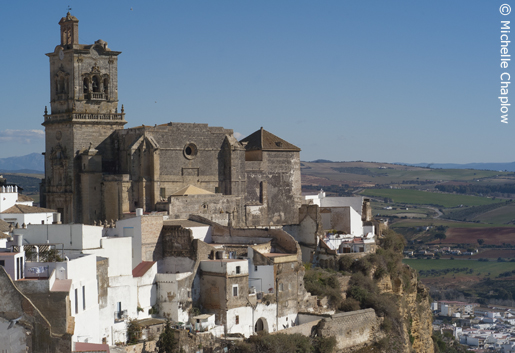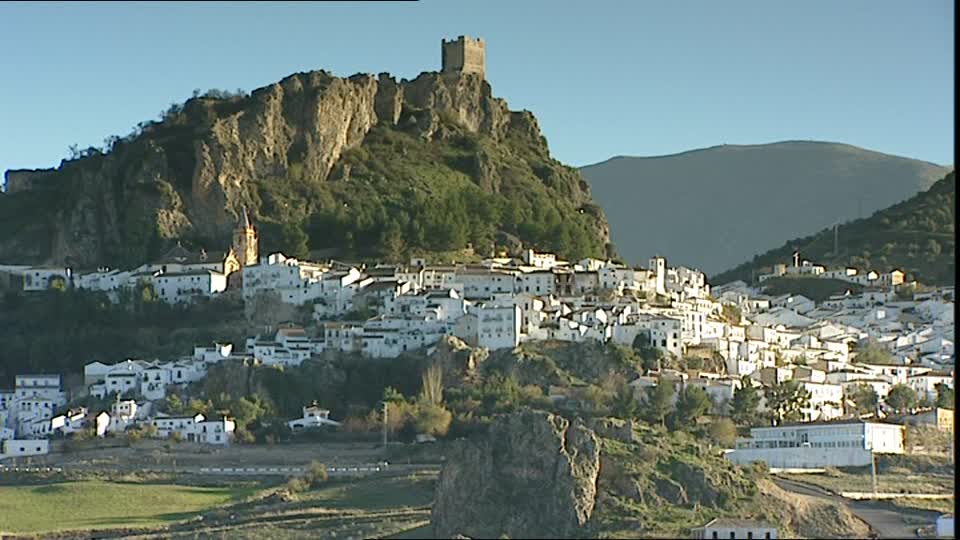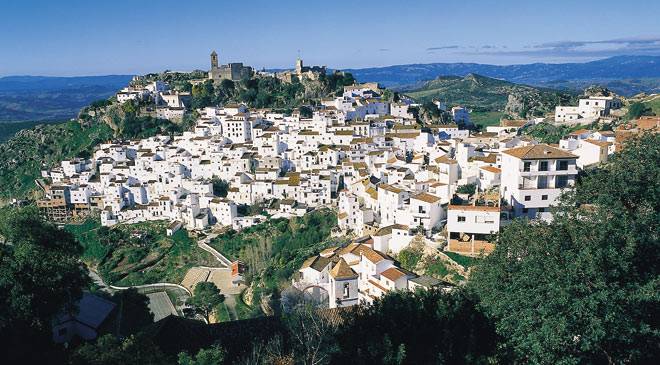
Ronda is a region of Andalusia that belongs to the province of Malaga.
This area of mountains, covered with thick pine forests, oaks, chestnut trees and spread with pretty little white villages offers landscapes of great beauty in a unique natural environment.
Archaeological discoveries have shown that the entire region has been inhabited since prehistoric times. Most villages existed in Roman times and were occupied by the Moors until the reconquest of Granada. There are about twenty. They are usually built on top of hills or on the sides of mountains, and fortified.
The white villages, “los pueblos blancos” in Spanish, are characterized by the facades of their houses, traditionally whitewashed, and the red tiles of the roofs. Their sloping, narrow and winding alleys, the pretty little squares and the profusion of flowers, including the beauty of the landscapes and the sympathy of its inhabitants make them such a full of charm places.
The roads to the White Villages are a touristic paths that runs through several villages. Some of them will be mentioned later in this article.
Arcos de la Frontera is located on a rocky promontory above “Rio Guadalete” and is considered as one of the most beautiful villages in Spain. This village was the capital of Taifa de Arcos in the Muslim era and the capital of the Duchy of Arcos in 1493. Its towers and churches bear witness to its historic past and its watchtowers offer spectacular views of the Guadalete.

Ubrique is 330 meters above sea level between the natural parks of Grazalema and Alcornocales. Its main economic activity is leather goods. It is also the city of origin of the toreador Jesulín de Ubrique.

Zahara de la Sierra, in the center of the Natural Park of Sierra de Grazalema holds the tower of its castle of Moorish origin. The church of Santa María de la Mesa dates from eighteenth century.

Grazalema has a rich architectural heritage, pretty streets and squares and churches of the seventeenth and eighteenth century and also several watchtowers. Its textile industry dates from the seventeenth century. It is possible to buy pure wool products from the region, made in a traditional way.

Setenil is a singular village settled against the mountain. Some of its houses are literally under the rock.

Casares owes its name to Julius Caesar who ordered its construction after using the thermal waters of Hedionda nearby, to heal. This village is also dominated by a castle of Arab origin. The particular configuration of its narrow streets has earned it the name of “suspended village”. It is also the birthplace of the writer and politician Blas Infante nicknamed the “Father of Andalusia”.

Gaucín has preserved the tower of the castle, which dates from the Arab occupation, called “El Castillo del Águila”. It was in this fortress that the Carlist snipers took refuge against the troops of Napoleon I. The village offers a magnificent panorama of the Mediterranean, the Atlantic, the rock of Gibraltar and the Moroccan coast.
